A Japanese Life of Bento
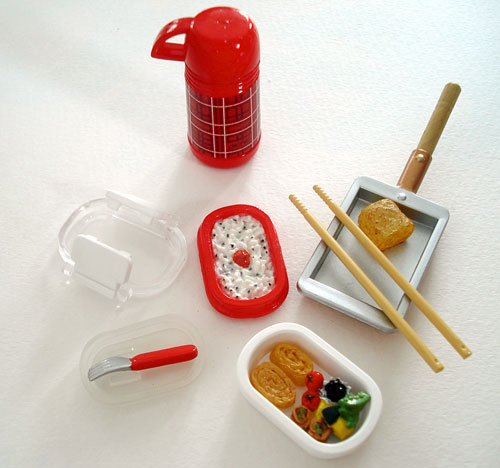
Bentos are just starting to penetrate the consciousness of people outside of Japan, though judging from the growing interest in bento sites like this one and several others, it's definitely trending up. However, the bento or obento (the more polite honorific term) in its many guises is an integral part of life in Japan. Here are the many different types of bento that a typical Japanese person might eat at different stages of life.
The Preschool Years
Pre-school institutions in Japan are nursery school (保育園 ほいくえん hoiku-en), which is for children aged about 2 to to 4, and kindergarten (幼稚園 ようちえん yoh-chi-en), for age 5 to 1st grade. Most pre-schools do not have school lunch facilities, so children are required to bring bentos for lunch. For mothers, making bentos every day for their children can be a stressful yet exciting challenge.
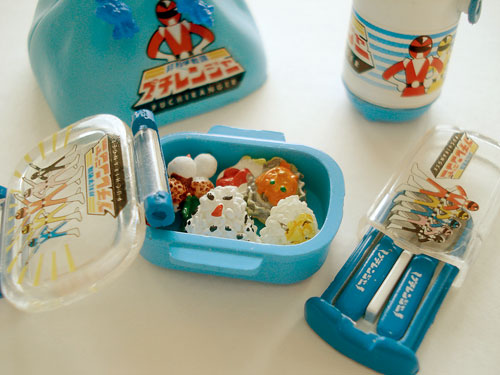
Some mothers (and even a couple of fathers) knock themselves out making charaben or kyaraben (キャラ弁), those highly decorated, cute bentos that still get the lion's share of attention outside of Japan when it comes to bentos. The most-often stated reason for charaben is to encourage picky eaters to eat their food, but I've always thought that their role as a creative outlet for the mothers, as well as the urge to compete against other kids' bentos (and by extension, their mothers' bento skills) are just as strong incentives. Every lunchtime can be a contest of sorts as to who has the cutest bento. There are also numerous formal contests that a charaben enthusiast can enter to win prizes, money and more.
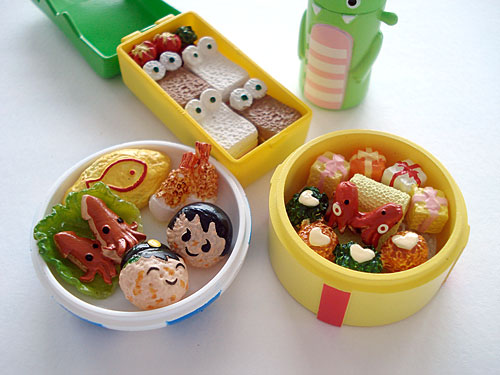
Elementary (Primary) School Years
Most elementary or primary schools (小学校 しょうがっこう shoh-gakkou) have school lunch programs, so mothers are relieved from everyday bento duty. However, bentos are still necessary for school outings (遠足 えんそく ensoku), which occur once or twice every school year. (Read about my ensoku bentos when I was a kid, which were a lot simpler than this one.)

Another occasion when bentos are needed is the annual Sports Festival (運動会 うんどうかい undohkai). This is a school-wide event where the kids are divided into two teams, Red and White, and compete in various athletic events. Parents are supposed to attend, and at lunchtime the whole family sits somewhere within the school grounds and tucks into a big family bento. This is another opportunity for the creative bentoist to show his or her skills off.

And of course, during summer vacation the family might go on a trip to the mountains or the seaside, with some onigiri (rice balls) or even a picnic basket.
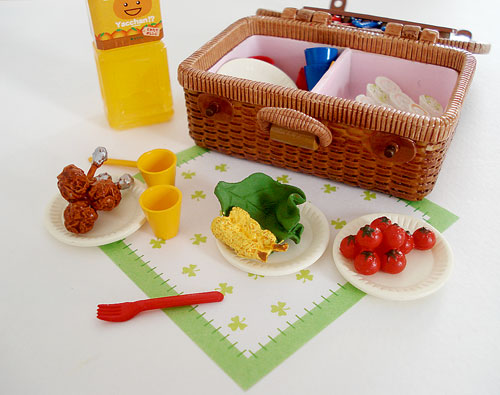
The High School Years (Grades 7 to 12 in the U.S.)
High school is divided into junior high, or middle school (中学校 ちゅがっこう chuugakkkoh) and senior high, or upper school (高校 こうこう kohkoh or 高等学校 こうとうがっこう kohtoh gakkoh). Many high schools don't have cafeterias or school lunch programs, so it's back to bento again. Boys of this age are growing rapidly and have huge appetites, so their mothers pack them big bentos (ドカ弁 dokaben). The boys are often still hungry, so they supplement their bentos with sweet (お菓子パン)or savory (おかずパン)filled breads like a yakisoba pan (a roll filled with fried noodles), anpan (a roll filled with sweet red bean paste), hotdogs and so on, bought at a convenience store or bakery.

Some girls are as hungry as the boys (especially if they participate in after-school sports) and require big bentos too, but others like small, pretty bentos that help them to watch their weight (ダイエット弁当, diet bento), made by their ever obliging mothers.

Ronin-sei and College/University Years
In Japan, the best way to assure future success in life is to enter a good university. Because of this, competition for entry into the best schools like Tokyo University is extremely fierce - so fierce in fact that if someone doesn't get in on the first try (they can take the entrance exams in their last year of high school) they will try once, twice, even more times, going to exam prep schools. These in-between students are called 浪人生 (ろうにんせい rohninsei), which comes from the word 浪人 (ろうにん rohnin), which were what out-of-work samurai were called in the olden days.
Rohnin-sei, as well as college kids, have notoriously poor eating habits, especially the boys. These students rely a lot on what's available at their local konbini (コンビニ, convenience store). Konbini stock a lot of readymade bentos. They aren't necessarily healthy choices, since they tend to have a lot of deep fried or otherwise high-fat foods in them, but they are probably better than cup noodles and hamburgers.
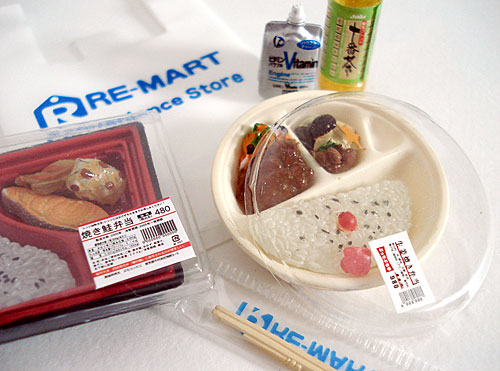
Girls of this period in life might also go for pretty food with a pseudo-European flair. This is typically served at cafes and is called 'Cafe style'. Cafe style bentos (カフェ弁当, cafe bento) come in alternate packaging and in small portions. There's usually a dessert too. (For some reason, desserts, fruit and other sweet things are considered the domain of women in Japan, and not very manly.)
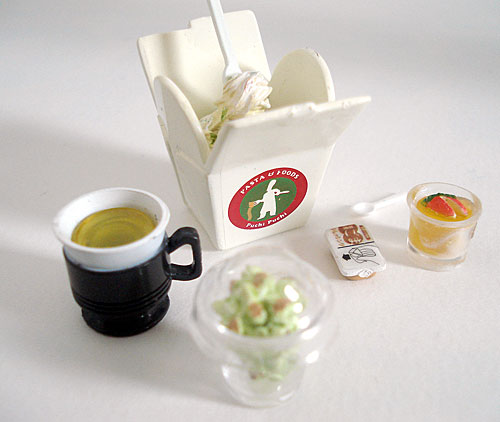
(See also: Take a virtual bento trip in Japan, a photo trip through a department store food hall's bento section.)
Young Adults, Newlyweds
After graduating from university, both single guys and girls continue to rely on konbini bento and the like for their sustenance, though many women, and some men, start making their own, health-conscious bentos. (Incidentally, this type of bento is what Just Bento is mostly about!)
Once they get married, a guy might be lucky enough to get a wife who takes the time to make him 'Loving Wife Bento', or 愛妻弁当 (あいさいべんとう aisai bento). These tend to be cute, colorful bentos, nutritonally balanced, often with little love messages (edible or not) in them - sort of a grown up version of charaben.
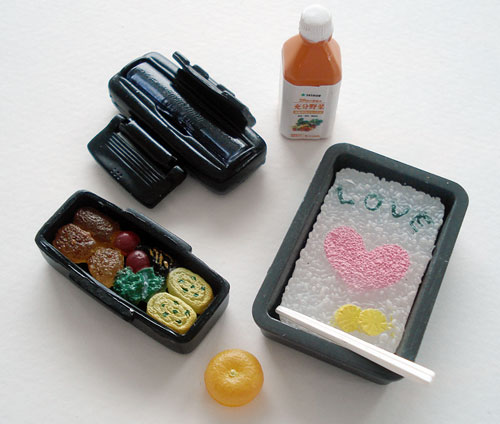
The honeymoon period does not last long for most couples.
The Child Rearing and Working Years
When the kids come, there's no time to make heart shapes on Dad's bento, so his bentos become purely practical, tasty and nutritious. The thermal bento packed with hot rice (hokaben, ホカ弁)is popular amongst men of a certain age.
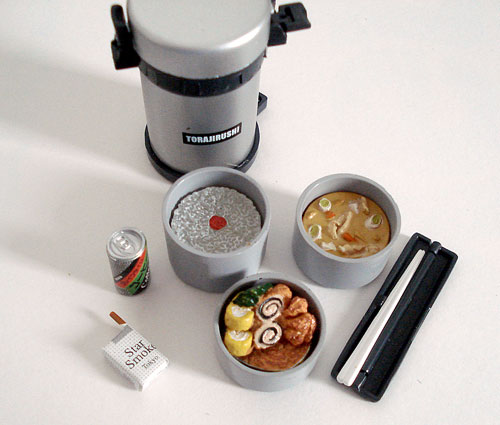
Also popular amongst those men of a certain age, but across all ages too, are train station bentos (駅弁, ekiben). Many people dream of taking a leisurely trip around the country, riding local rail lines and enjoying regional bentos. Most people don't have that kind of time though, so they content themselves by buying ekiben in the food halls of department stores.

Once the kids are bigger, Mom has a bit more leisure time. She might take advantage of that by enjoying lunches out with her friends. They might enjoy an elegant bento lunch (幕の内弁当, makunouchi bento) at a traditional Japanese restaurant, but might keep it a secret from their husbands. These ladies of a certain age have a lot of influence on which restaurants become popular. (A cliché is that if you see a lot of middle-aged women at a restaurant around lunchtime, that place is bound to be good and a good value too.)
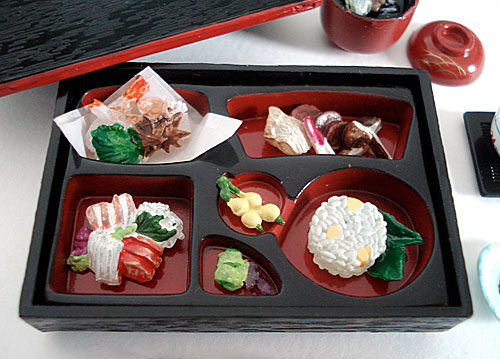
The Golden Years
A retired couple, if they don't get divorced ('retirement divorce' is an increasing phenomenon in Japan) have a lot more leisure time. With the kids grown up and hopefully gone (though many adult children in Japan continue to live with their parents, especially if unmarried) they can indulge in things like home delivered bento (お取り寄せ弁当) without breaking the bank.
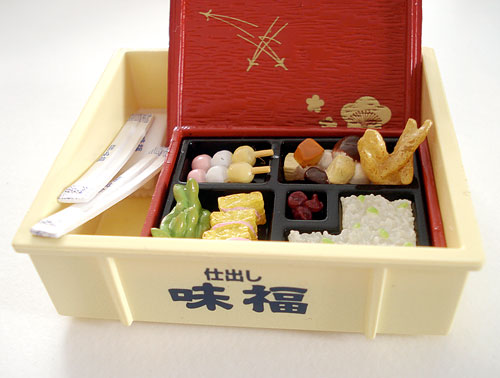
The older a Japanese person gets, the more they tend to prefer simple, traditional food. Simple onigiri (rice balls), perhaps filled with homemade umeboshi, are a perfect bento snack or lunch. In fact, onigiri are universally loved - they are soul food for Japanese people.

A few other bento types and vocabulary
- Kouraku bento (行楽弁当) - any type of bento eaten on an outing, such as for cherry blossom viewing. Can be an elaborate makunouchi bento, or something assembled at a convenience store.
- Ohanami bento (お花見弁当)- a bento eaten while admiring the cherry blossoms.
- Omotenashi bento (おもてなし弁当) - bentos served to guests; usually a makunouchi bento type.
- Shoukadou bento (松花堂弁当)- related to makunouchi bento; a formal bento served at restaurants, where a deep bento box is divided into 4 equal sections, each section with a small serving dish.
- Hinomaru bento (日の丸弁当)- the simplest kind of bento; the box is filled with white rice, and an umeboshi (pickled plum) is placed in the middle.
- Jukuben (塾弁) - a light bento eaten in the evening at juku (exam prep school). Most Japanese schoolkids go to a juku at some point in their lives.
And just in case you were wondering, all of the bentos in the photos are Re-ment miniatures.

If you enjoyed this article, please consider supporting this site by becoming my patron via Patreon.
